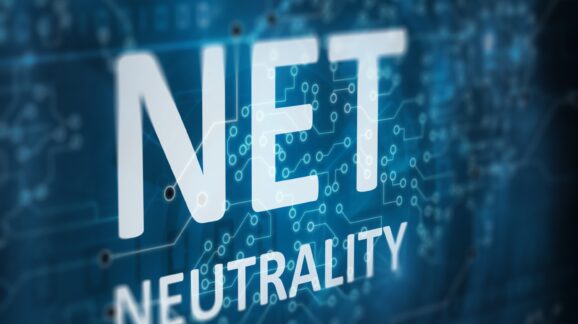Here we go again: FCC tries to bring back failed ‘net neutrality’ regulation

Photo Credit: Getty
Federal Communications Commission (FCC) Chair Jessica Rosenworcel announced a proposed rulemaking to apply Title II of the Communications Act and common carrier regulation once again to broadband service yesterday. While Rosenworcel describes the approach as a “light touch,” there is nothing light about invoking the FCC’s heaviest regulatory authority.
Like the Obama FCC’s 2015 Open Internet Order, this proposal endangers the highly successful, highly resilient broadband networks that American consumers enjoy.
Despite obvious legal infirmities under the major questions doctrine and Commissioner Brendan Carr’s agreement with the admonition that application of Title II would therefore be a “serious mistake,” the FCC is moving forward.
Rosenworel says Title II is needed for “re-establishing the FCC’s oversight over broadband and restoring uniform, nationwide net neutrality rules, which would allow the FCC to protect internet openness and consumers, defend national security, and advance public safety.”
Title II was written in 1934 for telephone service, when voice communications were transmitted by circuit switched networks and telephone companies were monopolies. The thrust of the Telecommunications Act of 1996 update was again telephone service, seeking to open the local monopolies of the so-called “Baby Bells” and allowing them to compete for long distance traffic.
The common carrier, rate regulation and related provisions of these laws were designed for old fashioned copper line telephone service – not today’s modern technologically sophisticated broadband networks that carry vast amounts of traffic while simultaneously managing network speed, capacity, upgrades, and cybersecurity. Simply put, Title II was never designed for internet service and its application does more harm than good.
Policymakers recognized that inapplicability, so from its inception until 2015 internet services enjoyed a bipartisan hands-off consensus. The Trump FCC’s 2017 Restoring Internet Freedom Order returned internet services to the light touch approach.
Broadband networks and the American consumers have greatly benefited. The United States Telephone Association reports that US broadband providers invested $102.4 billion in network capital investment in 2022 alone and a whopping $2.1 trillion since 1996.
Rosenworcel’s remarks invoke the pandemic and the need for network resiliency and reliability. However, real life experience shows that it is investment and not regulation that demonstrated its worth during the pandemic when US broadband networks performed superbly despite unprecedented demands.
Contrast that with the highly regulated European broadband networks and reports that European Union officials requested streaming services and individual users to “ditch high definition video to keep the internet from breaking.”
Following Europe’s heavy handed regulatory model does not produce network resiliency and reliability. To the contrary, it chills the investment and innovation that create robust broadband networks.
Moreover, Title II provides expansive regulatory authority to the FCC. While Rosenworcel says “no how, no way” to rate regulation and promises to use the FCC’s forbearance power to refrain from imposing it, forbearance is not foreclosure.
Once Title II authority is in place, this FCC or a future FCC can impose rate regulation. This ongoing threat and that of other Title II regulations will be a permanent regulatory overhang that will make ISPs hesitate before investing and innovating.
Section 230(b) of the Telecommunications Act sets out the policy that underpinned the formerly years long bipartisan approach. It seeks to preserve a free market for the internet “unfettered by Federal or State regulation.” The current FCC would be well served to follow this wise policy prescription.